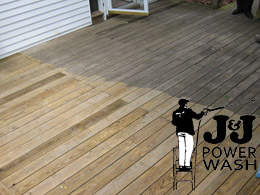Sticky deck problem raises more questions
Bill Burnett,Kevin Burnett
Wednesday, August 31, 2011
Recently we published a response to a reader who had a problem with a sticky deck. It seems her handyman didn’t read the instructions on the sealer can and got carried away. In this case, more was not better. The sealer pooled and dried to a sticky film.
We told our reader to give the spots a good scrubbing with acetone (lacquer thinner), rinse and finish with a light sanding. As often happens, a question begets more questions and different answers.
Here’s what this column generated:
Q: You mention redwood in your article. Our deck is cedar, which splinters a lot. I have had it power washed in previous years, but I think that might have made it worse. How would you treat a cedar deck?
A: The same as a redwood deck. Power washing with no sealer makes for dried-out wood and splinters. Power-wash the deck, let it dry and apply a sealer. As we’ve said many times before, we’ve had good luck with Duckback and Preserva Wood products. ( www.preservaproducts.com and www.superdeck.com).

Q: I saw your article and have a question: My deck is made from pressure-treated wood. In the past when I have applied deck stain, it looks great for a few months, then starts to wear off. By the next summer it looks as if it never penetrated the wood. Is that because the wood is pressure treated? Will the Preserva Wood or Duckback product do a better job than the product I have been using?
A: If the product you have been using is deck stain, the answer is yes. Stain will not penetrate pressure-treated wood. Pressure-treated wood is infused with a chemical preservative under pressure to prevent fungus and insect damage. If you cut a piece of PT lumber and look at the cut end, you’ll see 1/16 inch to 1/8 inch of penetration of the preservative. This prohibits water and stain from penetrating. If you continue to stain, count on a yearly project.
An old salt offered this suggestion:
“An old boat trick for too much sealer (tung oil or urethane) applied to teak decks: Apply 90 percent rubbing alcohol with bronze steel wool. It couldn’t hurt to try it on a small patch. Rubbing alcohol is cheap.”
We agree. It sure won’t hurt, and if it works, you won’t have to glove up and use a respirator, which you’ll have to do if you use acetone.
Finally, a manufacturer of wood stain pitched his product for cleaning up mistakes:
“I believe I have a safe and environmentally friendly solution to his predicament. We manufacture Penofin, a wood stain that is similar to Preserva Wood. A few years ago we launched a line of cleaners to help consumers prep their wood prior to staining as well as solve the more common problems associated with over-application.
“A sticky or tacky deck is usually due to over-application or failing to wipe the excess stain from the surface of the wood. We recommend our Penofin Pro-Tech Cleaner Step 2. This is a product that comes in powder form. You mix 1 cup to a gallon of water, wet the wood and apply the solution to the wood surface. Agitate lightly with a stiff bristled non-metallic brush for approximately 15 minutes. Rinse thoroughly with a garden hose and spray nozzle, and let the wood dry. This removes any tackiness or residue.”
We haven’t used this product, so for us it’s neither a pick nor a pan. We would probably give it a try. If it works it’s a good “green” way to go. If you would like more information, the website is www.penofin.com.
Read more: http://www.sfgate.com/cgi-bin/article.cgi?f=/c/a/2011/08/30/DDG91KQR4P.DTL#ixzz1WcgtbzP5
If you are in the Greater Philadelphia area and are in need of pressure washing, power washing, window cleaning, graffiti removal or vehicle cleaning services, contact our Philadelphia Pressure Washing company at 215-703-8306.
